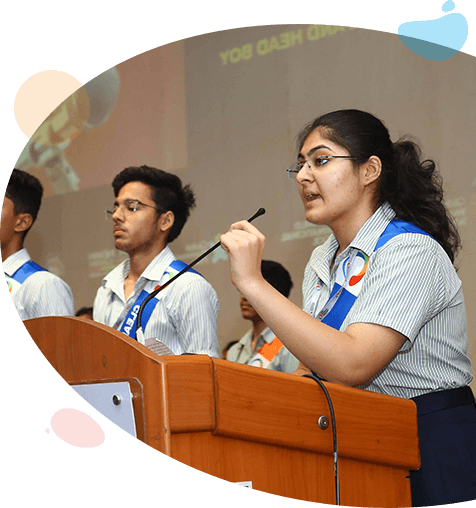The International General Certificate of Secondary Education (IGCSE) was designed for students aged between 14 to 16 years. The curriculum is certified by the University of Cambridge International Examinations and is recognised globally.
IGCSE pushes the boundaries of student-centred education and fosters a culture of intellectual curiosity and dialogue among its students. As a part of the two-year study, students will learn about various cross-cultural viewpoints.
The IGCSE Curriculum in Schools in Tokyo
Schools in Tokyo offer over 70 subjects, which include 30 different languages offered in several different combinations. IGCSE provides a structure that encourages pupils to be both academically and culturally engaged.
The curriculum includes five topic areas:
- Languages (First, Second and Foreign)
- Humanities and Social Sciences (English Literature, History, Geography, etc)
- Sciences (Physics, Chemistry, Biology, etc)
- Arithmetics (Mathematics, Additional Mathematics, etc)
- Technical, Creative and Vocational (Computer Studies, Music, Business studies, etc)
All students are expected to take at least 5 subjects. Although they may take up to 14 subjects.
What’s so Great About IGCSE Curriculum?
- Students can choose any three languages as per their interests.
- IGCSE teaches pupils to think critically and solve problems.
- The IGCSE certificate is accepted throughout the world.
- IGCSE examinations are open to both public and private applicants.
- The structure of IGCSE does not follow a predetermined pattern. The lessons are tailored to the needs of the pupils who will be using them.
- There is no repetition in the programme. It employs a more pragmatic approach.
What makes IGCSE different?
O Level Vs IGCSE
- IGCSE applicants are granted a grade between A and G, whereas O Level students are awarded a grade between A and E.
- Schools in Tokyo following IGCSE assess students’ ability to use their knowledge, skills, and understanding in real-world situations, as well as their oral and practical communication abilities, initiative, and problem-solving skills.
Reading and Writing are the only two skills that the O Level Curriculum focuses on.
- Coursework choices are provided in several IGCSE syllabuses, although the O Level syllabuses have fewer possibilities.
- IGCSE helps students prepare for the workforce or future education in advance. It also prepares pupils for international AS and A-Levels, while O Level is tailored to fulfil local demands.
- Unlike at IGCSE, when students have a wide range of practical possibilities, those at O Level are more limited.
CBSE Vs IGCSE
- IGCSE’s most appealing aspect is the breadth of study opportunities it provides. As a result of this, CBSE has a smaller selection of subjects.
- The IGCSE Curriculum emphasises critical thinking, problem-solving abilities, and a hands-on approach, while the CBSE curriculum focuses more on theoretical knowledge.
- As a result, CBSE includes more information but less in-depth knowledge of the subject matter. When compared to IGCSE, you must have extensive knowledge to do well.
What does ‘Grade threshold’ mean in the IGCSE?
The minimum required grade a student needs to obtain in every exam is called the “Grade Threshold”. The primary goal for deciding the grade threshold is to ensure that the grade isn’t either easy or too tough to earn compared to the previous year.
For non-discriminatory purposes, if the questions on the paper are tough, then a lower barrier is set, whereas if they are easy, then the threshold is set higher.
Conclusion
For students aged between 14-16 years, IGCSE is the best curriculum that Schools in Tokyo offers. The curriculum is well designed and appealing to the students who seek extensive knowledge.
No other curriculum can give such a wide aspect of learning for knowledge-hungry candidates. It is one of the most versatile curricula designed by Cambridge for students who want to explore.
